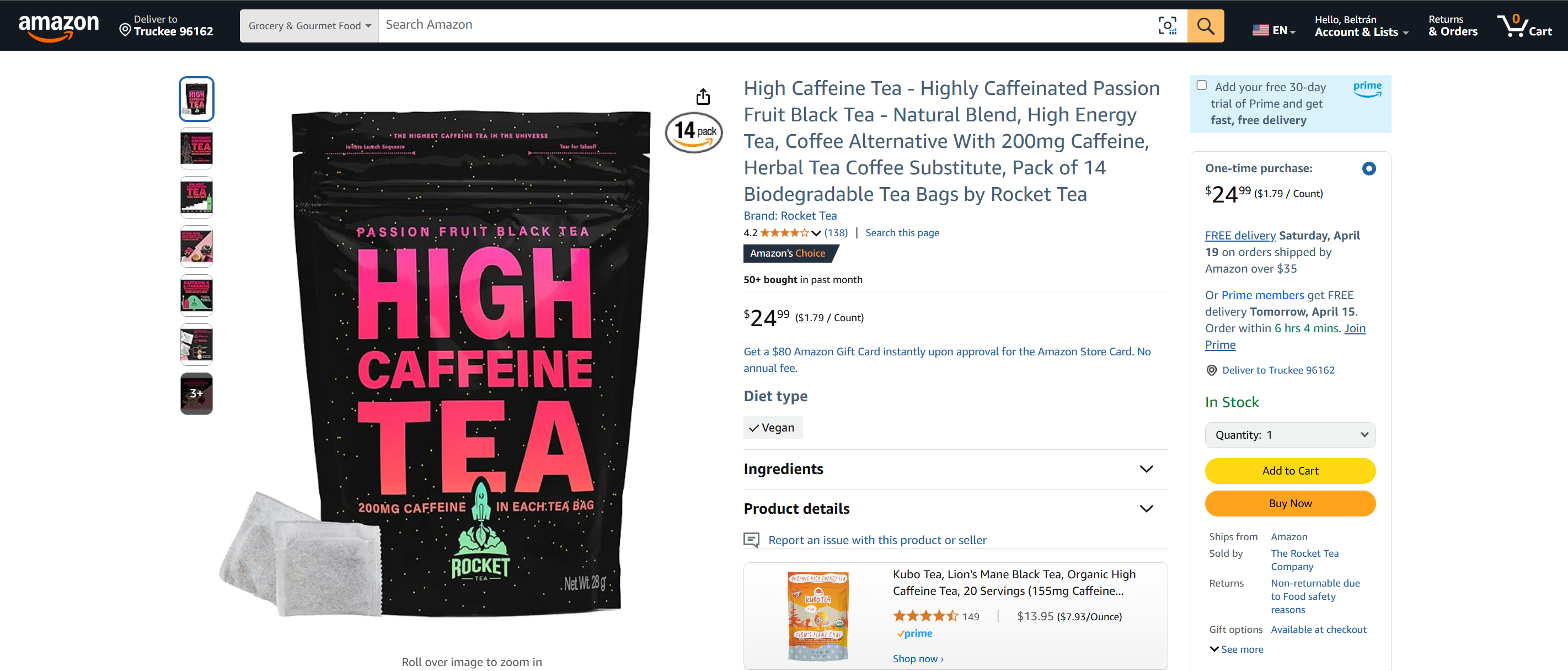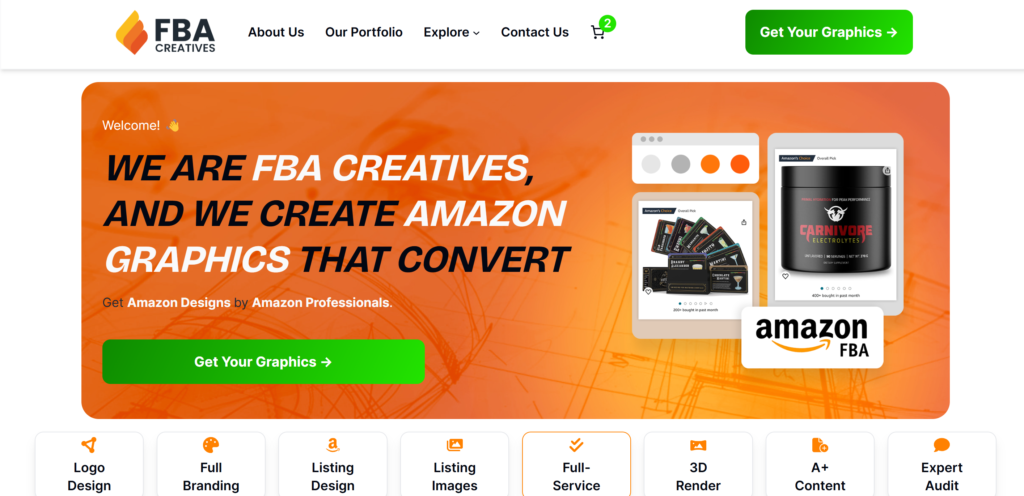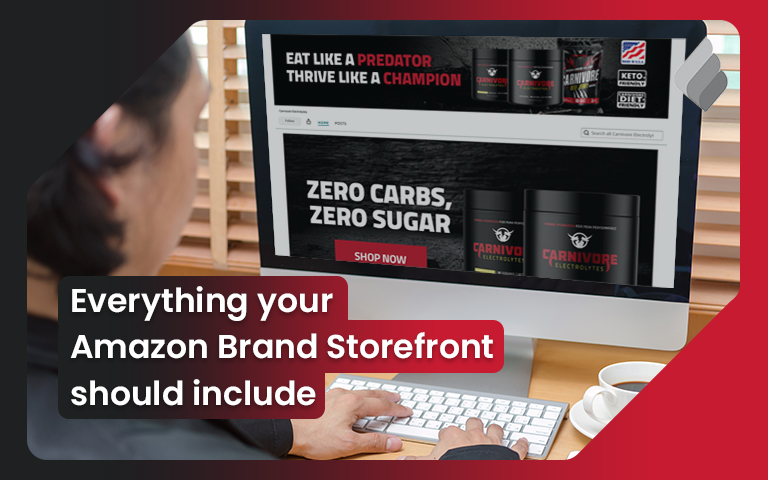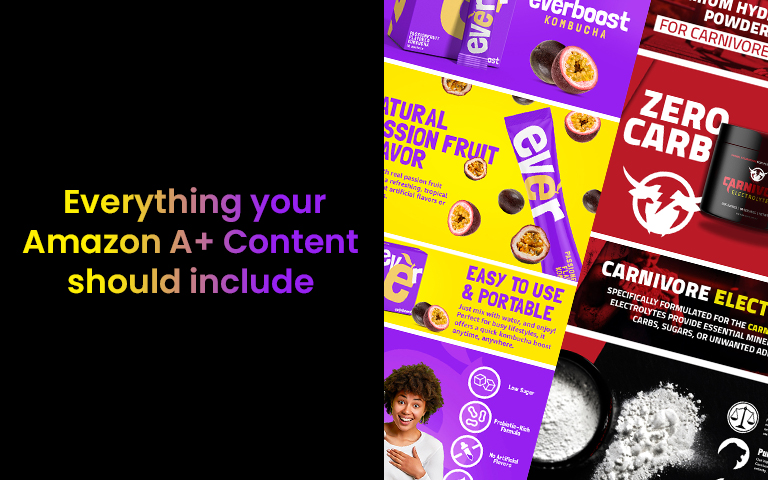
Amazon Keyword Research Made Easy: The Strategy That Doubled My Sales
Tips That Actually WorK
In the ever-evolving world of Amazon selling, success hinges on more than just having a great product. Strategic keyword research is the cornerstone of visibility, traffic, and, ultimately, conversions. Whether you’re launching your first product or optimizing existing listings, understanding how to do keyword research for Amazon is absolutely essential.
This guide will walk you through everything you need to know—from foundational concepts to actionable strategies.
- What is Amazon Keyword Research?
- The Role of Keywords in Amazon's A9 Algorithm
- Types of Keywords Every Amazon Seller Should Know
- Tools You Can Use for Amazon Keyword Research
- Step-by-Step: How to Do Keyword Research for Your Amazon Product
- Incorporating Keywords into Your Amazon Listing
- Avoiding Common Keyword Research Mistakes
- Tracking Keyword Performance
- Is It Worth Hiring An Expert?
- When to Hire a Professional Keyword Research Agency
- DIY vs. Professional Keyword Research: A Side-by-Side Comparison
- Case Studies of Successful Amazon Listings
- Final Keyword Research Checklist for Amazon Sellers
- Maximizing Your Amazon Growth with Smart Keyword Strategy
- Frequently Asked Questions (FAQs)
What is Amazon Keyword Research?

Amazon keyword research is the process of identifying the search terms potential buyers use when looking for products on Amazon. Unlike Google SEO, where search intent often leans toward informational queries, Amazon keywords are directly tied to buyer behavior and purchasing intent.
This distinction is key. By targeting the right keywords, you’re not just increasing traffic—you’re attracting high-quality visitors who are actively ready to make a purchase. Done correctly, keyword research positions your product in front of the ideal customer, boosting both visibility and conversions.
The Role of Keywords in Amazon’s A9 Algorithm

To understand the importance of keywords, you need to understand Amazon’s A9 algorithm. This proprietary system determines which products show up in search results. It considers factors such as keyword relevance, sales history, click-through rate, and even customer reviews.
When your listing is optimized with the right keywords, Amazon’s algorithm is more likely to serve your product to users who are searching for similar items. This boosts your ranking, increases discoverability, and enhances your chance of converting visits into sales. Ultimately, great keyword research feeds the algorithm with exactly what it needs.
Types of Keywords Every Amazon Seller Should Know
There isn’t just one type of keyword that fits all. To truly excel, sellers must understand and use different categories of keywords strategically.
Broad Keywords
Broad keywords are general terms like “water bottle.” They capture a wide audience and have high search volumes. However, because they’re so generic, they also come with fierce competition and may bring in unqualified traffic.
Long-Tail Keywords
These are more specific, descriptive phrases like “32 oz stainless steel insulated water bottle with straw.” They have lower search volume but a much higher conversion potential due to the specificity of user intent. Long-tail keywords often result in a better return on investment.
Backend (Hidden) Keywords
These don’t appear on your actual product page but are entered in the backend of Amazon Seller Central. While invisible to customers, they are crucial for search visibility. They help Amazon understand the full context of your product without keyword stuffing the public-facing listing.
Branded vs. Non-Branded Keywords
Branded keywords include specific brand names, like “Hydro Flask water bottle,” whereas non-branded keywords are more generic, such as “insulated water bottle.” Both types are important. Non-branded keywords help you reach new customers, while branded keywords support your brand recognition and loyalty.
Tools You Can Use for Amazon Keyword Research

To streamline and enhance your keyword research process, you’ll need the right set of tools. Fortunately, there are several high-performing tools specifically designed for Amazon sellers.
Helium 10
This all-in-one suite is a favorite among top sellers. Its tool, “Cerebro,” lets you reverse-engineer your competitors’ keywords, while “Magnet” helps you find high-volume, relevant search terms. With detailed metrics on search volume, keyword difficulty, and trends, Helium 10 is a powerhouse for any serious seller.
Jungle Scout
Jungle Scout offers a robust keyword research tool called “Keyword Scout.” It provides insight into historical keyword data, PPC bid estimates, and listing performance. This tool is excellent for identifying profitable keyword opportunities and validating product ideas.
Amazon Auto-Suggest
Never underestimate the value of Amazon’s own search bar. By typing in the beginning of a query, Amazon auto-fills with real search suggestions based on popular queries. This free method gives you a direct glimpse into how shoppers are searching—straight from the source.
Sonar Tool
Developed by Sellics, Sonar is a free Amazon keyword tool offering insights into keyword relevance, search volume, and competition. It’s great for those just getting started or supplementing their paid tools.
Hiring An Expert
Pro Tip: Partnering with professionals ensures these tools are used to their full potential. Their team knows how to extract the most valuable insights and apply them effectively—saving you time and driving better results.
Step-by-Step: How to Do Keyword Research for Your Amazon Product
Mastering keyword research takes more than plugging a product name into a tool. Here’s a proven, step-by-step method to ensure your listings are fully optimized.
Step 1: Know Your Product Inside and Out
Begin by thoroughly understanding your product’s features, benefits, and use cases. Consider who would buy it, how they’d use it, and what terms they might search. This foundation will guide all future keyword decisions.
Step 2: Analyze Competitors’ Listings

Look at top-performing listings in your niche. What keywords are they using in their titles, bullet points, and descriptions? Tools like Helium 10’s Cerebro can help you reverse-engineer their backend strategy. Learn from what works—but aim to do it better.
Step 3: Use Keyword Research Tools

Now, start gathering data. Use the tools mentioned above to compile a wide list of relevant keywords. Don’t just focus on volume—look at relevance, competition, and click potential.
Step 4: Identify High-Volume, Low-Competition Keywords
These are the golden nuggets. Keywords with decent search volume but low competition offer the best ROI. They help you stand out without battling top-tier brands.
Step 5: Prioritize Relevancy Over Volume
It might be tempting to chase high-volume keywords, but if they’re not relevant to your product, they’ll only lead to poor click-through rates and low conversions. Always prioritize terms that align closely with what you’re offering.
Step 6: Categorize Your Keywords
Group your keywords into categories: main, long-tail, branded, backend, etc. This structure makes it easier to integrate them strategically throughout your listing.
Incorporating Keywords into Your Amazon Listing

Finding the right keywords is only half the battle. The next step is integrating them into your product listing in a natural, persuasive way.
Title Optimization

Your title is prime real estate. It’s the first thing buyers see and heavily weighted by Amazon’s algorithm. Include your most important keywords early in the title while maintaining clarity and readability.
Bullet Points
Bullet points should highlight key features and benefits while incorporating secondary keywords. Keep them scannable and persuasive—remember, you’re convincing someone to buy.
Product Description

This is your chance to tell a story. Use it to reinforce key messages and include long-tail keywords that didn’t fit in the title or bullets. Make it informative and easy to read.
Backend Search Terms
These hidden fields help your product get discovered. Use them to include synonyms, alternate spellings, and relevant keywords you couldn’t work into your main copy.
Avoiding Common Keyword Research Mistakes

While keyword research can dramatically enhance your Amazon performance, common mistakes can just as easily set you back. Avoiding these pitfalls will keep your listings sharp and search-friendly.
Keyword Stuffing
Trying to include every possible keyword in your listing might seem smart, but it often leads to poor readability and can actually harm your rankings. Amazon prioritizes the customer experience, so overly stuffed titles or descriptions can result in reduced visibility—or worse, suppressed listings.
Ignoring Backend Keywords
Many sellers neglect backend (hidden) keywords, missing a valuable opportunity to improve discoverability. These fields should be treated as strategic assets. Use them to capture synonyms, misspellings, and other relevant terms that you couldn’t naturally include in the visible content.
Choosing Irrelevant High-Volume Keywords
High search volume is enticing, but if the keyword doesn’t closely match your product, it can drive the wrong kind of traffic. Misleading search results can lead to low conversion rates, negative reviews, and higher return rates.
Tracking Keyword Performance

Once your keywords are in place, the job isn’t over. In fact, consistent monitoring is key to long-term success. Tracking performance ensures that your strategy adapts to market changes and buyer behavior.
How to Monitor Rankings
Use tools like Helium 10’s Keyword Tracker or Jungle Scout’s Rank Tracker to monitor how your keywords are performing. These tools help you identify trends, measure progress, and detect issues early.
Adjusting Listings Based on Data
Keyword performance can fluctuate over time due to competition, seasonality, and changes in customer behavior. If certain keywords aren’t performing, consider swapping them out for more effective ones. Don’t be afraid to A/B test titles or bullet points to optimize for better results.
Tools for Ongoing Optimization

Platforms like Helium 10 and Jungle Scout offer ongoing analytics and insights to help you refine your keyword strategy. You can monitor keyword rank, conversion rates, and even sales correlation—powerful data that drives smarter decisions.
Is It Worth Hiring An Expert?
There’s no denying it—DIY can only take you so far. For sellers serious about scaling, professional optimization isn’t just a convenience—it’s a necessity.
Why DIY Has Limitations
While there are plenty of tools available, interpreting the data and executing a strategy requires skill and experience. It’s easy to get overwhelmed or make costly mistakes that affect your visibility and sales.
How FBA Creatives Delivers Proven Results

FBA Creatives is a highly-rated Amazon creative agency known for its precision, creativity, and data-driven approach. They specialize in keyword research, listing optimization, listing design, and A+ content—everything you need to succeed on Amazon.
Their team doesn’t just plug in keywords—they research, test, and craft compelling copy that speaks directly to your audience. Their campaigns are rooted in real analytics, not guesswork, and tailored to your unique niche.
Client Success Stories
From startups making their first sale to seasoned brands scaling into six figures, FBA Creatives has helped hundreds of clients crush their sales goals. Their personalized, hands-on approach sets them apart in a sea of cookie-cutter service providers.
When to Hire a Professional Keyword Research Agency
Not every seller starts out with a full team—and that’s okay. However, there comes a point when DIY keyword research simply isn’t enough. Recognizing that moment is crucial for scaling successfully.
Signs You Need Expert Help

If you’re experiencing stagnant sales despite having a great product, it might be due to poor keyword targeting. Other red flags include low visibility in search results, inconsistent keyword rankings, or difficulty competing in a saturated niche.
Even if your listing is performing decently, you could be leaving money on the table by missing high-converting search terms or not optimizing backend keywords. When you hit a plateau or want to accelerate growth, that’s the perfect time to bring in professionals.
Return on Investment
Yes, hiring a professional agency like FBA Creatives is an investment—but one that typically pays for itself. With expertly researched and strategically placed keywords, your listings can rank higher, attract more qualified traffic, and generate more sales.
By handing off keyword research to a team that lives and breathes Amazon SEO, you free up time and ensure a much higher level of precision and performance.
What to Expect When Working with FBA Creatives

When you partner with FBA Creatives, you’re not just getting a list of keywords. You’re getting a tailored strategy crafted by experts who understand both the art and science of Amazon optimization. Their process involves competitive analysis, keyword mapping, performance tracking, and ongoing refinement—all designed to help you scale profitably and sustainably.
DIY vs. Professional Keyword Research: A Side-by-Side Comparison
Still unsure whether to go it alone or hire a pro? Here’s a side-by-side look at how DIY stacks up against professional keyword research.
| Feature | DIY | FBA Creatives |
|---|---|---|
| Time Investment | High – hours of research and trial/error | Low – they handle everything for you |
| Tools | Limited to what you know how to use | Full suite of advanced tools and insider tactics |
| Accuracy | Depends on your experience | Backed by data, trends, and proven strategies |
| Optimization Quality | Varies; often lacks polish | Expertly crafted, buyer-focused, and conversion-optimized |
| Long-Term ROI | Inconsistent | Consistently high due to strategic planning |
As you can see, professional services offer a major advantage—especially when your goal is to scale fast, compete confidently, and maximize your revenue potential.
Case Studies of Successful Amazon Listings
Let’s bring theory into the real world. Here are a few examples (anonymized for confidentiality) where keyword optimization—especially when handled by FBA Creatives—made a dramatic difference.
Case Study 1: Kitchen Product Brand
A mid-sized brand selling eco-friendly kitchenware struggled to gain visibility. After a full keyword audit and image optimization by FBA Creatives, the brand saw a 150% increase in organic impressions and a 70% boost in sales within just 45 days.

Case Study 2: Health & Wellness Supplement
This startup had solid branding but poor discoverability. FBA Creatives implemented a fresh keyword strategy focused on long-tail, high-converting search terms. The result? Their product ranked in the top 5 for 10+ relevant keywords, and their ad spend became significantly more efficient.

Case Study 3: Fashion Accessories Seller
Competing in a highly saturated niche, this seller had difficulty standing out. Through meticulous competitor research, backend keyword enrichment, and title optimization, FBA Creatives helped them rank on page one for several competitive keywords—doubling their monthly revenue in under three months.

These examples highlight what’s possible with smart keyword research and expert execution. While results vary based on niche and product, the consistent thread is this: professional optimization delivers measurable, meaningful growth.
Final Keyword Research Checklist for Amazon Sellers
Before you hit publish on your Amazon listing, make sure you’ve covered all your bases. This checklist will ensure you’re on the right track for optimal keyword performance.
- ✅ Fully understand your product and buyer intent
- ✅ Analyze at least 3–5 competitor listings
- ✅ Use multiple keyword tools to gather data
- ✅ Identify a mix of broad, long-tail, branded, and backend keywords
- ✅ Avoid keyword stuffing or using irrelevant terms
- ✅ Strategically place high-impact keywords in the title and bullet points
- ✅ Use backend fields effectively for additional visibility
- ✅ Monitor performance and adjust keywords regularly
- ✅ Consider seasonal and trend-based keyword updates
- ✅ Partner with professionals like FBA Creatives for best-in-class results
This checklist isn’t just a one-time activity—it’s a recurring process. Keyword trends evolve, buyer behavior shifts, and your strategy should adapt to stay competitive.
Maximizing Your Amazon Growth with Smart Keyword Strategy
Keyword research isn’t just a technical task—it’s a critical growth driver for any Amazon seller. When done correctly, it improves visibility, attracts high-intent shoppers, and fuels long-term success.
We’ve covered the essential types of keywords, tools to use, steps to follow, and mistakes to avoid. But more importantly, we’ve highlighted how powerful it can be to have professionals in your corner. Agencies like FBA Creatives offer the experience, tools, and data-backed strategies that turn average listings into top performers.
If your goal is to build a brand that scales profitably and sustains momentum, it’s time to take keyword research seriously—and to do it right from the start.
So, are you ready to stop guessing and start growing? Trust the pros. Trust FBA Creatives.
Frequently Asked Questions (FAQs)
1. What are backend keywords and why are they important?
Backend keywords are invisible search terms entered in your Amazon Seller Central account. They help improve your product’s discoverability without cluttering the public listing. They’re crucial for capturing alternate spellings, synonyms, and related queries.
2. How often should I update my keywords?
Ideally, review your keyword performance every 30–60 days. Update more frequently during high-demand seasons, new product launches, or after major algorithm changes.
3. Can I do keyword research without paid tools?
Yes, to some extent. Amazon’s search bar, competitor listings, and tools like Sonar offer free insights. However, premium tools provide deeper data and competitive advantages that free resources simply can’t match.
4. How does keyword research affect Amazon PPC?
Keyword research directly influences PPC success. Better keywords lead to more relevant ads, improved click-through rates, and lower advertising costs. Many tools offer keyword overlap for both organic and paid strategies.
5. What sets FBA Creatives apart from other agencies?
FBA Creatives combines data-driven strategy with expert-level creativity. Unlike generic agencies, they offer tailored solutions based on your product and market, with a proven track record of boosting sales through precision keyword targeting and compelling listing optimization.
Have an Amazon product in mind?
We handle your entire Amazon listing from start to finish — including your title, listing images, A+ Content, and even your Brand Storefront.








